#Arthur Quiller-Couch
Text

Kay Nielsen, List, ah list to the zephyr in the grove, In Powder and Crinoline, 1913.
Published within In Powder and Crinoline, sub-titled “Old Fairy Tales Retold by Sir Arthur Quiller-Couch”, in 1913. This fine watercolour was originally reproduced opposite page 52 and is one of the 26 colour plates. The illustration accompanies the tale of “Felicia or The Pot of Pinks”.
The verse is as follows: “List, ah, list to the zephyr in the grove! / Where beneath the happy boughs / Flora builds her summerhouse / Whist! ah, whist while the cushat tells his love”. (x)
#kay nielsen#painting#art nouveau#1913#In Powder and Crinoline#List ah list to the zephyr in the grove#zephyr#grove#list#illustation#book illustration#art nouveau illustration#nielsen#Sir Arthur Quiller-Couch#Arthur Quiller-Couch#flora#color plates#colour plates#the pot of pinks#felicia#danish#danish art#scandinavian#scandinavian art#Fairy Tales#illustrated work#Old Fairy Tales#art
66 notes
·
View notes
Text
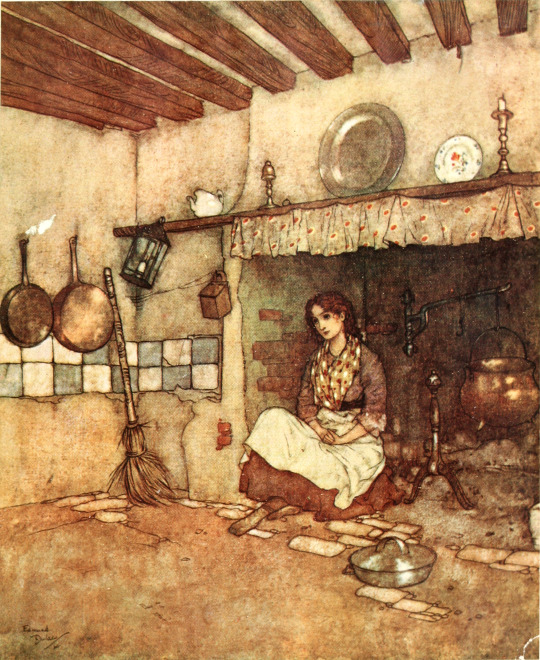
Cinderella (1910) - Edmund Dulac
#illustration#edmund dulac#the sleeping beauty and other fairy tales from the old french#arthur quiller-couch#cinderella#1910s#1910
12 notes
·
View notes
Text
To be, or the contrary? Whether the former or the latter be preferable would seem to admit of some difference of opinion; the answer in the present case being of an affirmative or of a negative character according as to whether one elects on the one hand to mentally suffer the disfavour of fortune, albeit in an extreme degree, or on the other to boldly envisage adverse conditions in the prospect of eventually bringing them to a conclusion. The condition of sleep is similar to, if not indistinguishable from, that of death; and with the addition of finality the former might be considered identical with the latter: so that in this connection it might be argued with regard to sleep that, could the addition be effected, a termination would be put to the endurance of a multiplicity of inconveniences, not to mention a number of downright evils incidental to our fallen humanity, and thus a consummation achieved of a most gratifying nature.
Arthur Quiller-Couch on Jargon
7 notes
·
View notes
Text
Kenneth Grahame based the character of the Water Rat in The Wind in the Willows on his friend Arthur Quiller-Couch.
It's kind of funny while reading Quiller-Couch's retellings of Beauty and the Beast and other French fairy tales to think that they were written by Ratty.
3 notes
·
View notes
Text
One thing i find nifty is how Robert Louis Stevenson's last novel St. Ives was left unfinished upon his death, later finished by Arthur Quiller-Couch. Arthur's final novel Castle Dor was left unfinished upon his death and was finished by Daphne du Maurier
Idk, its like a neat literary chain
#public domain#aside from daphne#booklr#books#classic literature#robert louis stevenson#arthur quiller-couch#daphne du maurier
2 notes
·
View notes
Text
Entanglement
Ogni cosa da immortal potereVicina o lontana,NascostamenteA ogni altra è legata,Sicché non puoi toccare un fioreSenza sconvolgere una stella.
Arthur Quiller-Couch
Ph MLM

View On WordPress
0 notes
Text
Oppressed with sleepiness, she went to bed and was snuggling down in the perfumed sheets when her eyes fell on the little table by the bedside. Someone had set a cup of hot chocolate there; half asleep, she reached out her hand for it and drank it. Her eyes closed and she fell into a delicious slumber where she dreamed of her lover, a prince as handsome as the God of Love in picture-books, and when he spoke it was with a voice that went straight to her heart.
Arthur Quiller-Couch, "Beauty and the Beast" from The Sleeping Beauty and Other Fairy Tales from the Old French (1910)
#enchanted hot chocolate is the best hot chocolate#i'm assuming#this is the time of the year i put peppermint and pink heart-shaped marshmallows in mine and i should think that's pretty close#beauty and the beast#literature
607 notes
·
View notes
Text

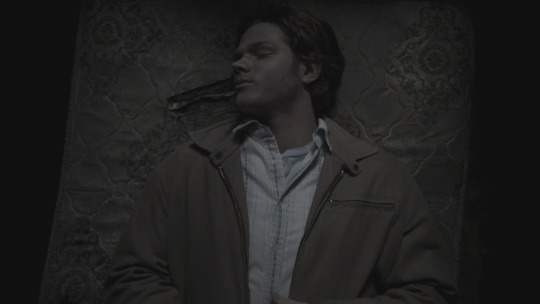

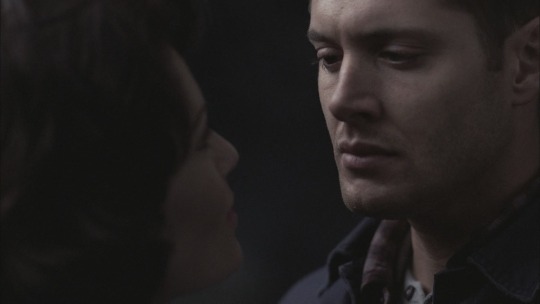
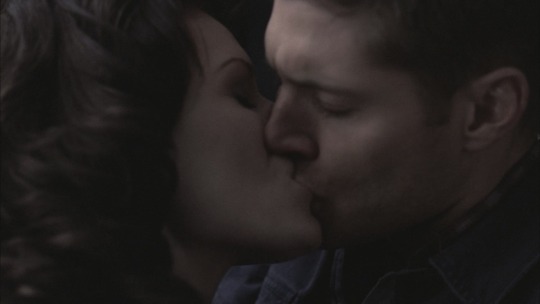





ahbl part two/the sleeping beauty trans. sir arthur quiller couch
#wincest#samdean#camille preaker dressing room scream gif here#HE ASSURED HER THAT HE LOVED HER BETTER THAN HIS OWN SELF
159 notes
·
View notes
Text
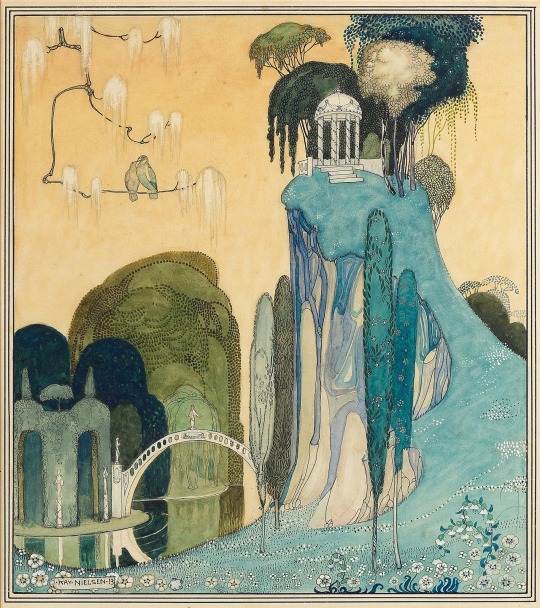



Kay Nielsen "In Powder and Crinoline" by Arthur Quiller-Couch (1913)
From a previous post and I wanted it included in this group.
12 notes
·
View notes
Text

THE TWELVE DANCING PRINCESSES retold by Sir Arthur Quiller Couch. (New York: Curan, 1923). Illustrated by Kay Nielsen
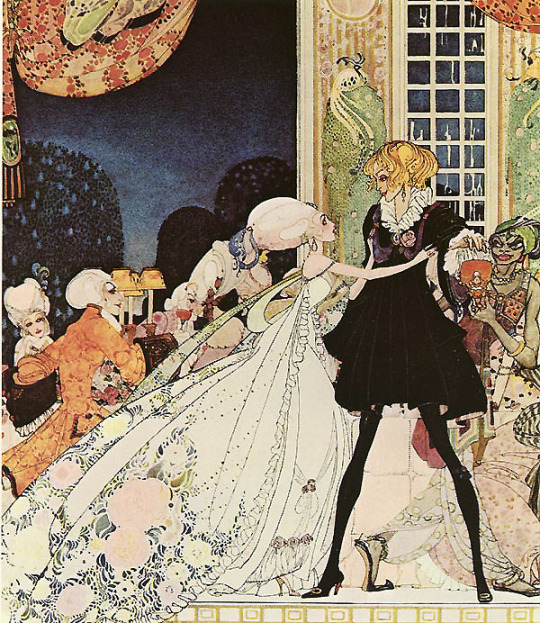




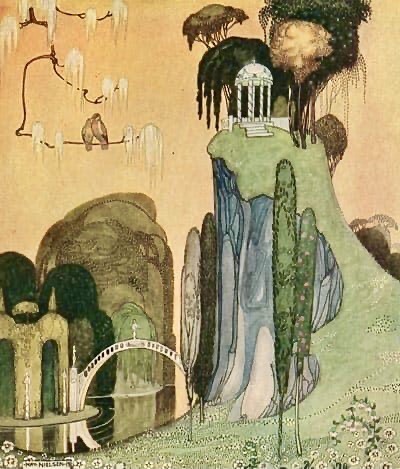

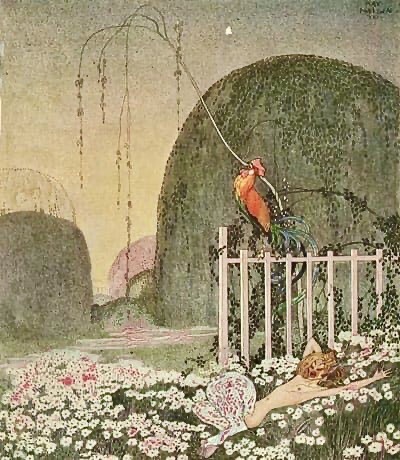
#illustrated books#beautiful books#vintage books#fairy tales#children’s book#book cover#books books books#book blog#books#kay nielsen
197 notes
·
View notes
Text
Reading Castle Dor after literally just discovering it through the Tristan and Iseult Wikipedia page. Extremely struck by the fact that this is such a different piece of work to Daphne du Maurier's usual work, and that yet her hand is almost indistinguishable from Sir Arthur Quiller-Couch's work. (I say almost, but again, her style definitely leaks in through the doomed love story parts).
So far, the discussions of the myth are all very Tristan & Iseult-adjacent, a metaphysical contemplation of location, memory through history and natural landscapes. I love that it doesn't pretend to be a simple retelling but recognises that themes carry themselves across time and space. Also - this entire thing is predicated upon Beroul's Roman de Tristan and how lucky is it that I happened to carry my copy with me on my flight back home?!
[...] As the two men retraced their steps towards Lantyan, the Notary endeavoured to reconstruct a scene of centuries past, when the narrow rivulet beside them had been a flowing stream, a tributary to the main river beyond, and the ancient palace of Lancian, sited below the present farmhouse and by the water's edge, would have had - even as Béroul described it - a stream running past the queen's chamber window. The Queen Iseult - here, beneath his eyes, at the base of the wooded hill, where the great railway viaduct stood today, Iseult had waited in the moonlight, while the shadow of her lover Tristan, his finger to his lips warned her to be silent, for the king her husband was hiding near at hand.
"They trysted in an orchard," murmured Monsieur Ledru, "and lo and behold, here is an orchard, even to this day but the olive tree, beneath which the dwarf Melot and the king lay concealed - the olive tree is absent."
His eye lingered on the neglected apple trees, misshapen by time, hoary with age, their lichened branches growing athwart the stream, while his companion, whose quick eye had caught the sotto voce monologue, followed the glance, and smiled."
There is something so striking about two men of opposing professions - science and law, a doctor and notary respectively, being drawn to reconstruct the romantic imaginations of Tristan and Iseult. When combined with the small-town setting and a cast of transposed characters that are wonderfully at home in their new roles - queen to mistress, knight to onion seller, love potion to cordial, it straddles the line between retelling and being something completely novel.
5 notes
·
View notes
Text
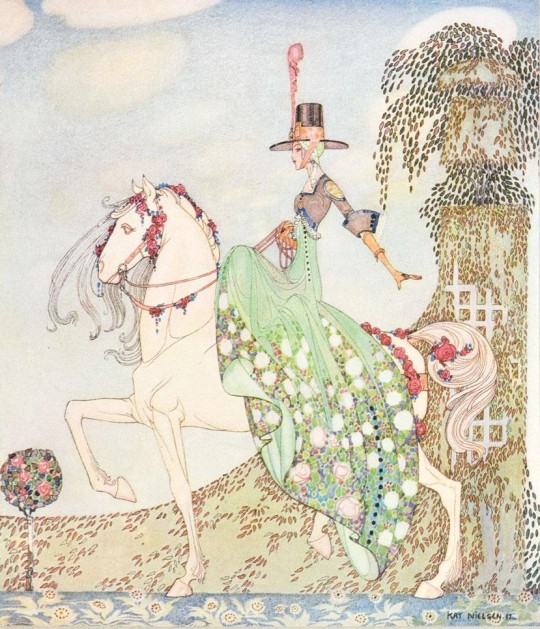
Kay Nielsen, Princess Mignon Minette who goes out in search of Prince Soushi on a white horse, Illustration (painting) from, In Powder and Crinoline: Old Fairy Tales, retold by Sir Arthur Quiller-Couch, Published by Hodder & Stoughton, 1913.
#1913#illustration#kay nielsen#Arthur Quiller-Couch#Hodder & Stoughton#old fairy tales#in powder and crinoline#fairy tales#fairy tales illustrated#art nouveau illustrations#art nouveau#aigrette#horse#white horse#princess#princess mignon#princess mignon minette#mignon minette#mignon#prince soushi#painting#powder#crinoline#Sir Arthur Quiller-Couch#art
78 notes
·
View notes
Text



Mark Alexander Boyd was born on 13th January 1563 in Penkill, Ayrshire.
Born Mark Boyd, the Alexander was his own grandiose addition, was the great-grandson of Robert Boyd, Grand Chamberlain of Scotland. He was educated at Glasgow College under the care of his uncle James Boyd, the Archbishop of Glasgow, his father having died when he was a child. He appears to have been a recalcitrant student with a hot-headed nature and it is said he was advised to move abroad to pursue a career as a soldier of fortune. In any event, he went to France at the age of 18 to study Law in Paris under a Latin tutor and later studied Law in Orleans, then Bourges. Having to quit Bourges because of an outbreak of the plague, he moved to Lyons and then Italy
On his return to France he joined the army of Henry III, fighting on the Catholic side during the French Wars of Religion in spite of being a Protestant himself. After being wounded in the foot he resumed his Law studies in Toulouse but was imprisoned on suspicion of being a spy. However, he escaped to Bordeaux with the help of friends, later spending time in La Rochelle, Spain, and The Netherlands.
In conjunction with this extraordinary itinerant life, this colourful, eccentric character wrote poetry mostly in Latin and Greek and had two collections of Latin poems published in 1590 and 1592. He returned to Scotland in 1595 where he unsuccessfully sought the patronage of James VI with a flattering poem. He died of fever in Ayrshire in 1601. His only known poem written in Scots, the Sonnet of Venus and Cupid, also known as “Fra banc to banc” was rediscovered and published in 1900 by Sir Arthur Quiller-Couch in his Oxford Book of English Verse and championed by Ezra Pound.
The first pic is a 17th century engraving of Boyd, the second is a Scottish twenty pound note, with a wee excerpt of the below poem, so the vast majority of my fellow Scots may not have heard of Boyd, but you have been walking around with a connection to him for years.
Fra banc to banc, fra wod to wod, I rin
Ourhailit with my feble fantasie,
Lyk til a leif that fallis from a trie
Or til a reid ourblawin with the wind.
Twa gods gyds me: the ane of tham is blind,
Ye, and a bairn brocht up in vanitie;
The nixt a wyf ingenrit of the se,
And lichter nor a dauphin with hir fin.
Unhappie is the man for evirmair
That teils the sand and sawis in the aire;
Bot twyse unhappier is he, I lairn,
That feidis in his hairt a mad desyre,
And follows on a woman throw the fyre,
Led be a blind and teichit be a bairn.
6 notes
·
View notes
Text
Helene Hanff: Sees a book by Sir Arthur Quiller-Couch, reads it, and embarks upon a lifelong journey through great classics of English literature
Me: Sees a book by Sir Arthur Quiller-Couch and uses his silly name to create a series of Wodehousian fairy tale retellings
9 notes
·
View notes
Note
What is your best advice for any writer who wishes to write a story inspired by Beauty and the Beast but wants to make sure it feels creative and fresh and new?
Hmm... there are a lot of possible answers to this question.
For starters, I'd suggest going back to the original literary versions of the tale. If the length of Madame de Villeneuve's original novel is too daunting, just stick with the shorter versions: Madame de Beaumont's, Andrew Lang's, and/or Arthur Quiller-Couch's. You might also rewatch a few of the film adaptations (Disney's, Cocteau's, and at least two or three others – the Czech Panna a Netvor is a particularly acclaimed lesser-known version).
Then decide which themes stand out the most for you and emphasize those themes in your version.
Do you want to go back to the story's original meaning, an allegory for arranged marriage, but put a new spin on that theme that reflects your views on the subject? Or do you want to downplay that theme, as most modern adaptations do? Do you view the story as chiefly about gender relations, with the Beast's frightening looks and Beauty's initial fear of him representing female fear of patriarchal power and male sexuality, which she loses as he treats her with constant respect and chivalry? Or about different types of love, with Beauty learning to choose "companionate love" (based in friendship, mutual respect, and shared interests and values) over shallow, appearance-based infatuation? Or do you prefer the Beast to represent a social outcast: someone wrongly feared, hated, and forced to hide from the world, whose true value and worthiness of love Beauty discovers?
And what matters most to you about the ending? The Beast's transformation into a human, or Beauty's willingness to love him in his Beast form?
I still remember that post I once read about Beauty and the Beast-type stories, which discussed whether the central appeal of those stories is identifying with Beauty and the fantasy of "taming the Beast" (winning the love of something frightening and making it safe and gentle to you), or identifying with the Beast and the fantasy being loved despite being "ugly," "frightening," and "different"? Of course neither of those perspectives is the single reason for the story's appeal: why cant it be both?
There are more questions you'll want to ask yourself too. Who is the real protagonist in your version, Beauty or the Beast? Whose growth takes center stage: Beauty's as she learns to love the Beast, the Beast's as he earns her love, or both equally? Will your version include a villain, or do you see no need for one? Do you want to keep the air of mystery from the original tale? (e.g. "Who is the Beast, how did he come to be, and what does he want from Beauty?") If so, that will probably require changes to the Beast's backstory, because the familiar tale is so well-known. Or are you content to cut the mystery aspect and let the audience know exactly who and what the Beast is from the start? For that matter, how did the Beast come to be cursed? Would you want to go back to Villaneuve's original version and have him cursed by a wicked fairy whom he refused to marry? (That has interesting potential in today's post-#MeToo era.) Or follow the post-Disney tradition of making it a punishment for some wrongdoing? Or some other, completely original means of enchantment?
You might also want to draw on unique traditions from other cultures' variations on the tale. For example, in Eastern European versions like Panna a Netvor or Russia's The Scarlet Flower, the Beast hides from Beauty, so through most of her arc of learning to love him, she never sees him, but only hears his voice, and doesn't know he's a Beast. Only just before she goes back to visit her family does she finally see him, so the struggle of whether or not she can love a Beast becomes a late plot twist rather than a problem presented from the start. That could be an interesting choice to adapt.
And then there are the story's two most controversial aspects: the issue of "Stockholm Syndrome" and the ending. How are you going to deal with the fact that Beauty is the Beast's prisoner through most of their romance arc? A few modern retellings have avoided making the Beast the one who threatens Beauty's father or who accepts her as a prisoner in his place, but instead portrayed both Beauty and the Beast as prisoners of whatever higher power cursed the Beast in the first place. You could find an original way to do that too. Or, if you think that would rob the Beast of the moral grayness that makes him interesting in traditional versions, find some other solution to fend off accusations of "Stockholm Syndrome." Then there's the claim some people make that the ending goes against the story's message when the Beast changes into a handsome prince. Would you want him to stay a Beast in your version, possibly with Beauty becoming (or discovering that she already is) a non-human creature too? Or would you make it clear that the Beast's hideous form symbolizes some emotional unhealthiness within him (e.g. his "animalistic" selfishness and rage in the Disney version, or his trauma and depression in Megan Kearney's webcomic) and that his becoming human again represents his healing?
I hope I haven't gone on and on too much. There are many more things I could say, but this is enough for now.
Just find which aspects of the traditional story speak to you the most, and which aspects you don't care for as much and might want to change, and then do whatever you like with them.
36 notes
·
View notes
Quote
Sad Memory brings the light
Of other days around me.
Thomas Moore, from “The Light of Other Days,” The Oxford Book of English Verse 1250–1918. Editor: Arthur Quiller-Couch. (Oxford University Press March 26, 1963) (via The Vale of Soul Making)
4 notes
·
View notes